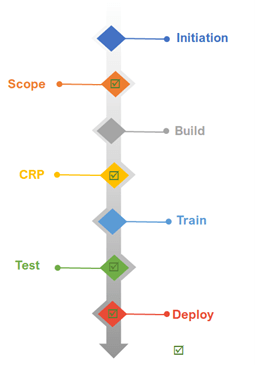Over the past 17 years, VistaVu Solutions has sold and implemented Enterprise Resource Planning (ERP) systems for companies in a wide range of industries across North America.
In my experience, many companies considering an ERP purchase tend to focus heavily on the system’s features and functions. A powerful feature set makes a big impression, so the attraction is understandable. To ensure that you get the right system, you will want to conduct requirements gathering with each department or business unit so you can clearly articulate your needs to the vendor. This will give you the highest chance of success in finding the right solution.
If you are considering an ERP purchase, here is my top advice — I encourage you to think of features and functions as only one leg of a three-legged stool. You need all three in place for your ERP to deliver the benefits you want.
The other two legs require answers to the following questions to ensure you have the most well-rounded understanding of your future solution.
1. Who will implement my ERP?
In saying this, I don’t mean which company, brand or logo. I mean the individuals who will be implementing your ERP.
Prospective buyers should ask for names, resumés and references of the people doing the work of your ERP implementation. Scrutinize these carefully.
Your implementer should have many years of experience with the same ERP system that you’re buying and they should have worked with many companies that look like yours. Ideally, they would come from the industry, so they have sat on your side of the table before. This industry experience will allow them to appreciate software in practical application. And they will be able to better communicate and empathize with you.
It’s a good idea to ask for references and to contact two or three of their most recent implementations. You will want to see their certification in implementing that system (all ERP publishers have a certification process for their partners). You want to know that your implementer not only has a solid track record over time, but is recognized as one of the top professional organizations at this moments in time.
If the person’s ERP resumé seems thin, or references are not provided, that should be a red flag for your purchase.
2. How will you implement my ERP?
We’ve dealt with the what (the features and functions of the ERP system you’re buying). We’ve dealt with the who (the people who’ll perform the implementation).
The final leg of the stool is about how – in other words, the process.
If I were an ERP customer, I would want a detailed understanding of how the implementation will take place and what’s expected of me in the process. While your system integrator will have their own method of implementing, several activities are universal:
- Project Management – These projects are complex and invasive. Strong project management on both sides is required to minimize risk, cost and timelines. This area should also include change management to aid adoption.
- Training – On Friday everyone closed the laptop or tablet and went home for the weekend. On Monday everything has changed, screens, buttons, fields, reports –everything. A strong training plan will be vital to ensuring your staff can hit the ground running.
- Data – you will bring legacy data from a previous system to a new system. The vendor should have a process for Extraction, Transformation, Load (ETL). This is always a high-risk area and one that the customer underestimates in time and effort
- Testing – there needs to be clear test plans as you will be relying on this system to manage your businesses after going live. Finding bugs / errors after you are live will slow your operations and potentially introduce business interruption.
- Cut Over – This is when you turn off the old system and turn on the new system. Arguably, this is the most important part of the implementation as tensions can run high especially if problems are discovered, users lack training, authorizations, data is found to be incorrect, etc. A comprehensive cut over plan will mitigate much of the risk and hopefully allow your team to address minor issues.

There are various frameworks to implement ERP, with names like Agile and Waterfall. You don’t need to know all of those details, but you do need to know that your implementer has a clear, proven methodology.
Even at the best of times, ERP implementations are complex, invasive and sometimes painful. To implement successfully, the process needs to be structured with military precision. That includes both the implementer’s work and what you’re expected to do as the customer.
If the process outlined by your implementer seems casual or chaotic, that’s how your implementation will go.
While features and functions are important, if your ERP never gets up and running – because the implementer was inexperienced or their process was poor – you’ll never get to use those cool features anyway.
If you have questions about what ERP can do for your organization, please don’t hesitate to reach out.
Tags:
ERP
June 24, 2021




